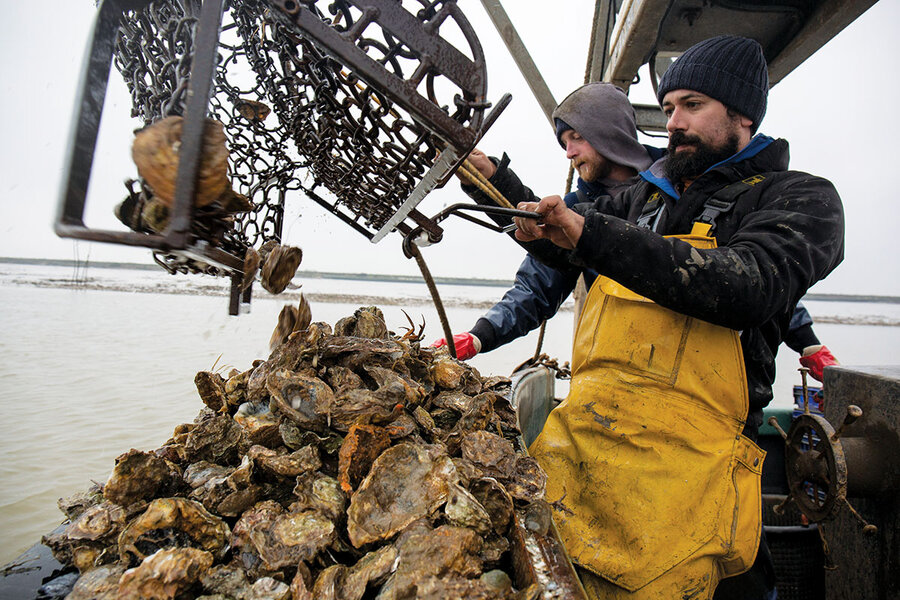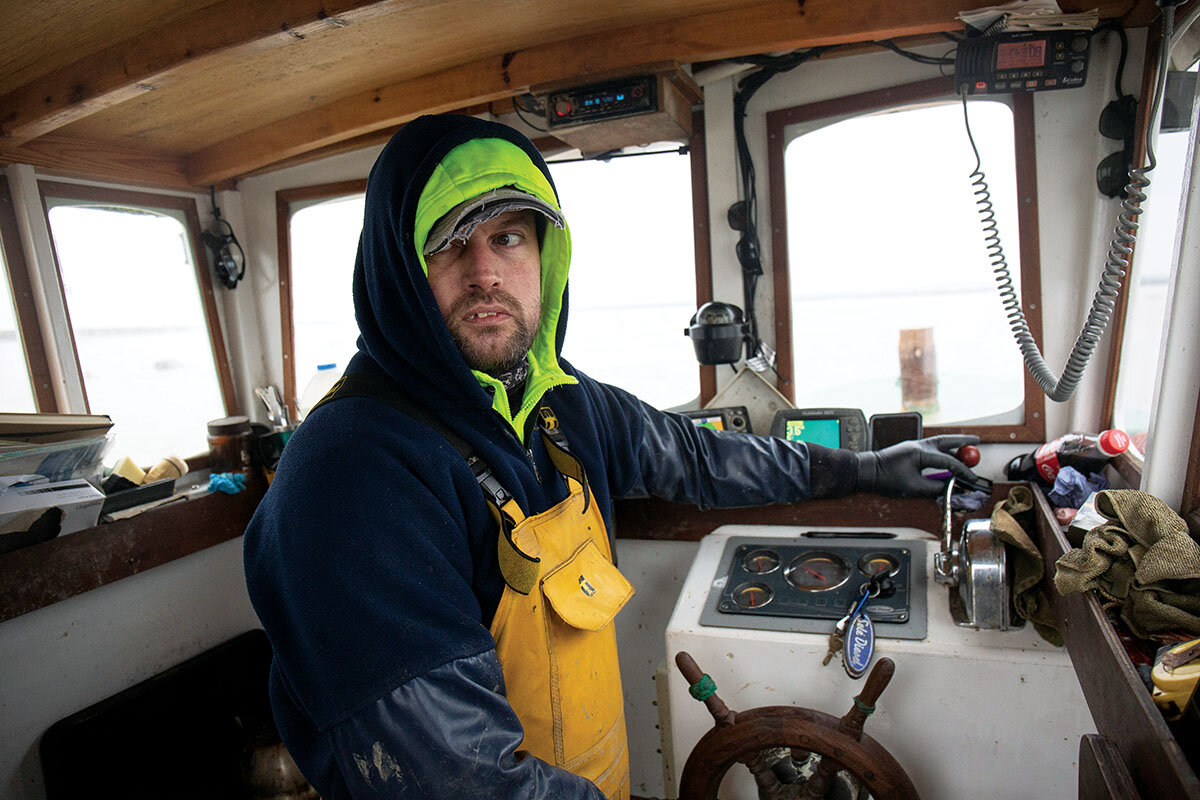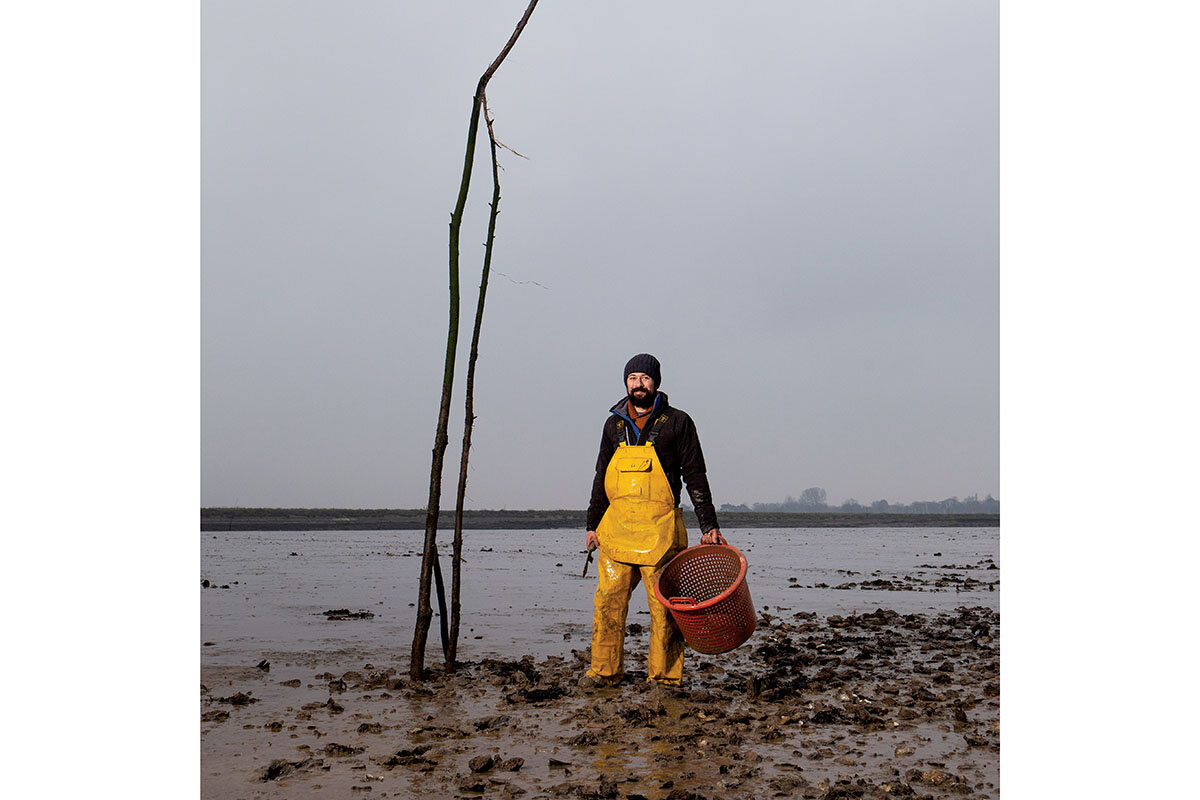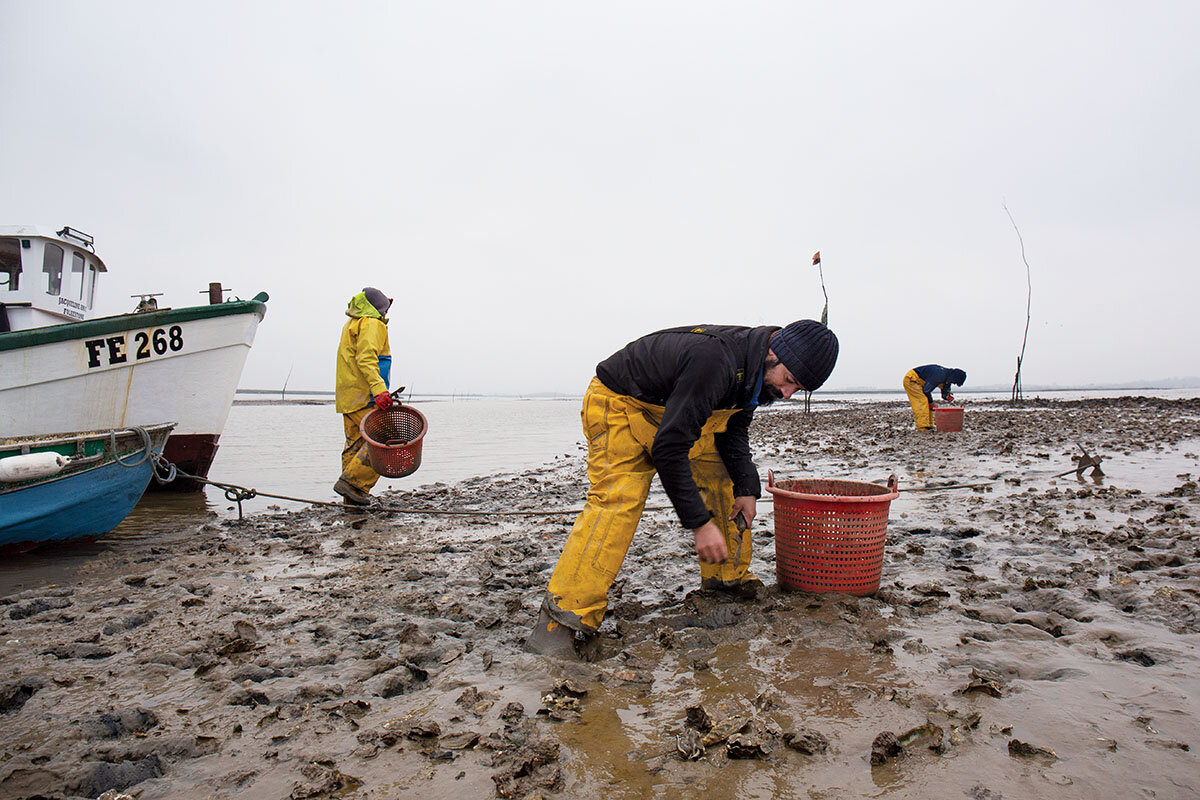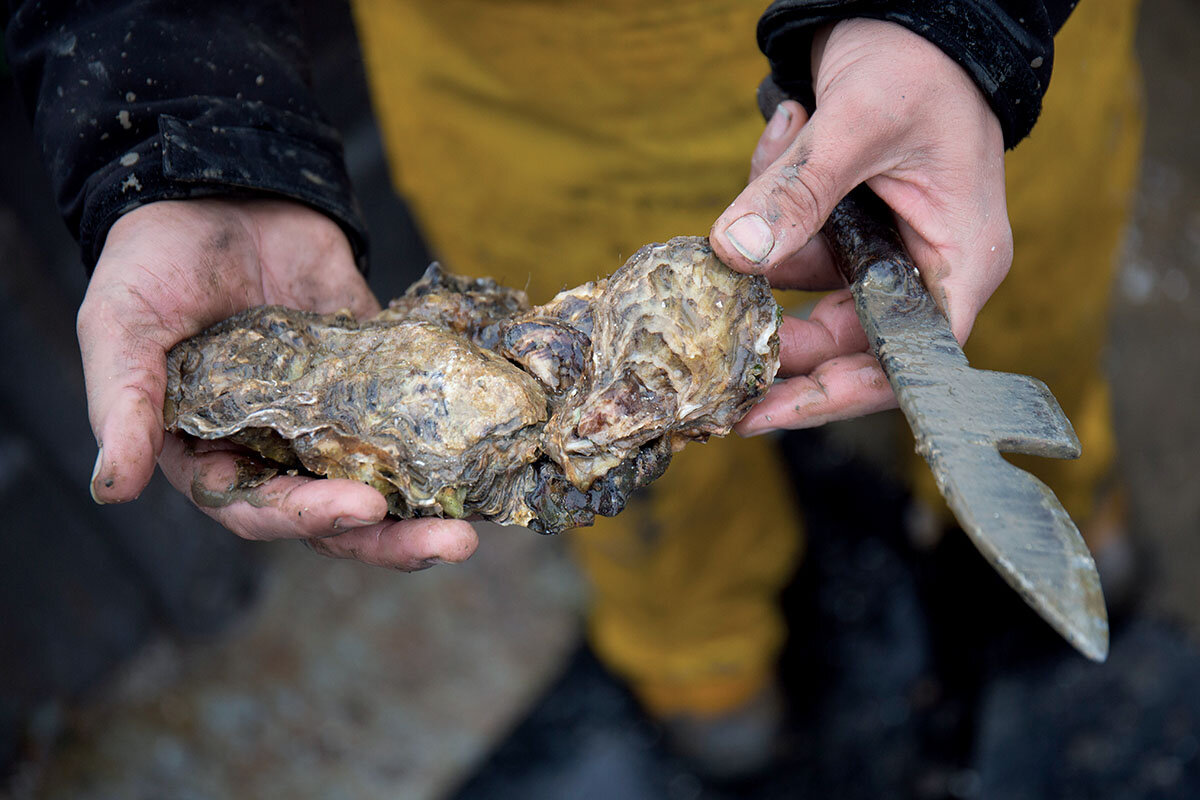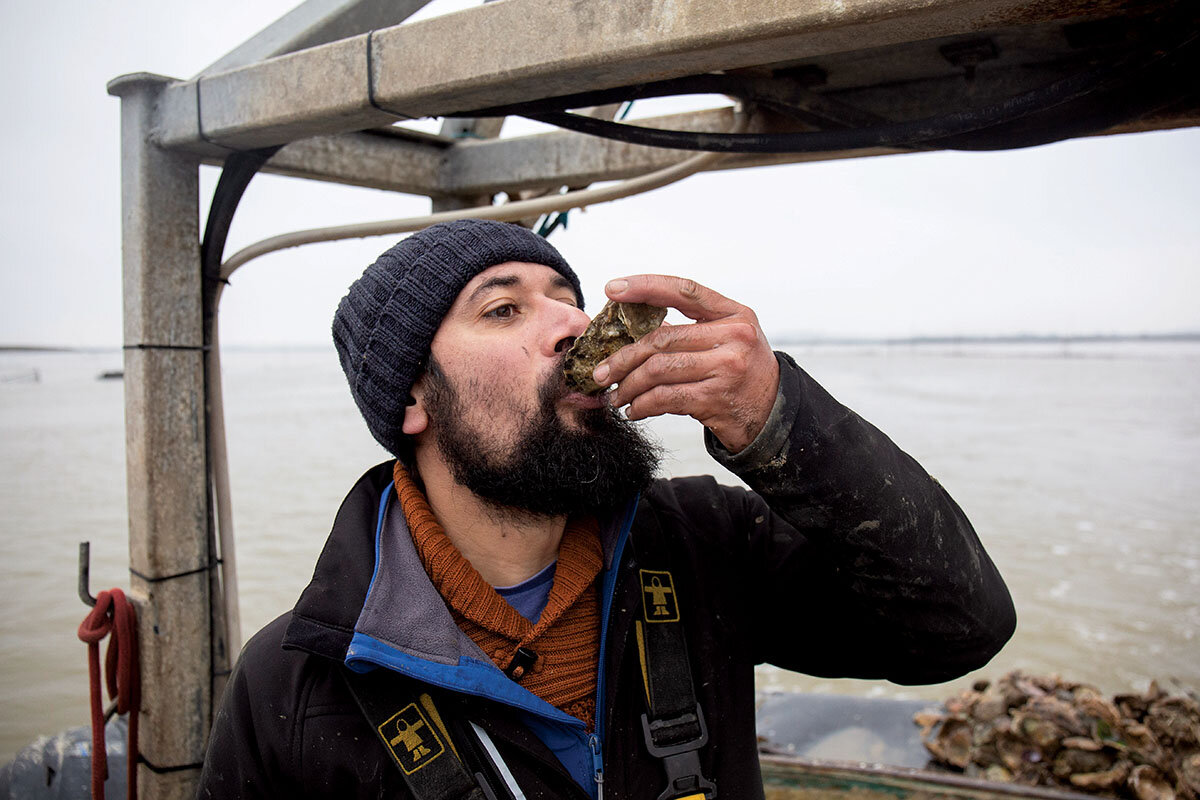Tradition on the half shell: Picking oysters in post-Brexit Britain
Loading...
| Mersea Island, England
For eight generations, going back to the 1700s, Tom Haward’s family has been harvesting succulent oysters from the mud flats of Mersea Island. Located 75 miles northeast of London, the estuary island is known for its shellfish.
The Hawards, who run an oyster bar in London and a small market on the island, also exported their mollusks to Europe – that is, until Brexit wreaked havoc on the industry. The European Union placed a ban on live shellfish from the United Kingdom, and since then, the shellfish trade has ground to a halt.
The British fishing fleet was one of the loudest voices in the pro-Brexit camp. But not Mr. Haward, who opposed leaving the EU. “Brexit’s negative impact is going to reverberate through the shellfish industry for many years,” he says.
Stewardship of the estuaries is important to the Haward family, which owns 14 acres of mud banks. The beds are rich in nutrients for the spawn to settle into and become oysters. The Hawards pick them up by hand or use a dredger if they are deep and out of reach, and return any that are not fully developed. Mr. Haward likes the fact that he’s doing the same work as his ancestors.
“The world has changed so much, and yet what we do has barely altered. I find that incredibly humbling,” he says.




